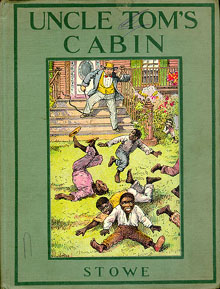
|
|
Barse and Hopkins published a number of series aimed at different segments of the children's book market. As you can see from a list included at the end of the last chapter, the "Pleasant Hour Series" offered abridged and adapted versions of various British and American "classics." Mary E. Blaine is cited as the adapter of most other titles in the series listed on WorldCat, but it is almost certain that this adaptation was actually the work of a British children's book writer/adapter named H[enrietta] E[lizabeth] Marshall, as you can see by comparing the text below to the edition published by Dutton and Jack in their AS TOLD TO THE CHILDREN EDITION. (See also the Donohue and Company's YOUNG FOLKS' EDITION, which probably was derived directly from Marshall's, as well as the shorter LITTLE FOLKS' EDITION published by Graham & Matlack, which was probably derived from this Barse and Hopkins text.) Like Marshall's, "Blaine"'s treatment minimizes the religious aspects of Tom's story. In both texts, the narrator refers to slaves as "niggers," something Stowe never did (see page 10), and compares Topsy to an "ugly little black doll" (page 31). Full-color illustrations by Hugo von Hofsten seem to have been a regular feature of the Pleasant Hour books. Pleasant Hour Series: Uncle Tom's Cabin, |

|
